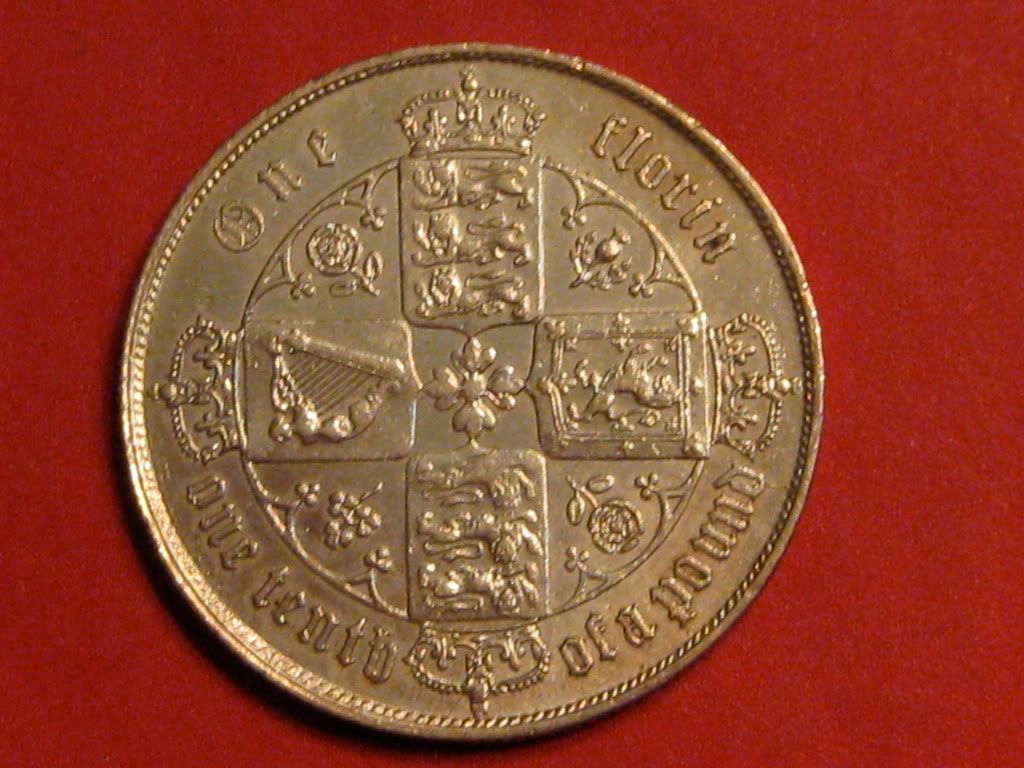Gothic Florin - cleaned or dipped? Grade?
Hello guys,
I have been culling my collection lately and came upon this florin I bought some time ago. The reverse looks fine but the obverse seem to have some 'noise' to it - I also think I may see some straight lines in the fields, but not on the devices. Could these be die polish lines? Sorry for the poor pics - I may try more photos later. Also, what are your opinions regarding the grade of this coin (aside from the ding around 8 o'clock on the obverse)?


I have been culling my collection lately and came upon this florin I bought some time ago. The reverse looks fine but the obverse seem to have some 'noise' to it - I also think I may see some straight lines in the fields, but not on the devices. Could these be die polish lines? Sorry for the poor pics - I may try more photos later. Also, what are your opinions regarding the grade of this coin (aside from the ding around 8 o'clock on the obverse)?


0
Comments
Regards to die polishing lines please take a look at my post at the bottom of this thread:
http://forums.collectors.com/messageview.cfm?catid=26&threadid=717617&highlight_key=y&keyword1=lines
Olmanjon
http://bit.ly/bxi7py
A simple dip in acetone, or distilled water, or something which will not affect the metal surface of the coin, can't usually be considered "cleaning" in the negative, numismatic sense of the word. (Even though it IS technically cleaning, in the sense of removing surface grime).
You've got "good" and "bad" cleaning. "Good" cleaning really doesn't count as such, numismatically speaking. "Bad" cleaning like dipping is not necessarily all bad, just dangerous, because it affects the metal of the coin, as I mentioned. (Just as abrasive methods do.)
Did this help, or just confuse you more?
As to the coin in the OP, it does look to have been dipped, yes. Too shiny looking. Nice detail, though.
Collector since 1976. On the CU forums here since 2001.
Olmanjon
http://bit.ly/bxi7py
If you did it in Jeweluster or EZ-est or one of those commercial coin cleaning solutions, then it might benefit. Or not. Sometimes a good quick dip (followed by a rinse in distilled water) can bring out the luster (or proof mirrors) of a coin that are obscured beneath whatever the toning or discoloration is. It's important to rinse after you dip, though, because if traces of the dip are left on the coin, they'll turn it funky colors and do other bad things.
What I hate is dipping a coin with dark patches or stains, only to find out that the stains didn't come off in the dip, and the dip worked on the unstained areas, made them lighter, and now the dark stains stand out even worse. That sucks. Some coins respond well to dipping and some don't.
Collector since 1976. On the CU forums here since 2001.
Olmanjon
http://bit.ly/bxi7py
There are many threads on this....Jewel Luster, etc. do remove oxidation but then also take some of the true luster in a coin away as they remove some of the metal underneath.
This coin is a bit hard to see as there are marks that look to be wear and not clearly striae but perhaps a bit more resolution might make this clear. Definately Gothic florins come with the striae and I have some (but sadly no picture capability). These florins come in mint state or near mint EF and above from satin to prooflike as some care was given with some dies and make the coin very close in apperance to proof & more often than not on the reverse.
Send us some more pictures please.
Well, just Love coins, period.
As for condition, it looks to be in the EF range (gVF-EF). The reverse has some flattened lions, but that is typical of the business strike and not necessarily wear. If the grime is just removable grime you probably have some decent value in the piece. VF is 45 quid and EF is 150 quid per Spink - it's worth much more than $60 in xf.
They will also get body bagged by many TGP's.
Then again the coin may look different in hand or with different lighting. It's often hard to tell just from photo's.
Many coins have had brief dips but it would be hard to tell just by looking at them as they haven't been dipped enough to damage the coin. Once a coin has been over dipped its pretty much impossible to reverse the damage. The only thing that may make an over dipped coin look better is some dark toning which would take decades to achieve naturally.
Well, just Love coins, period.